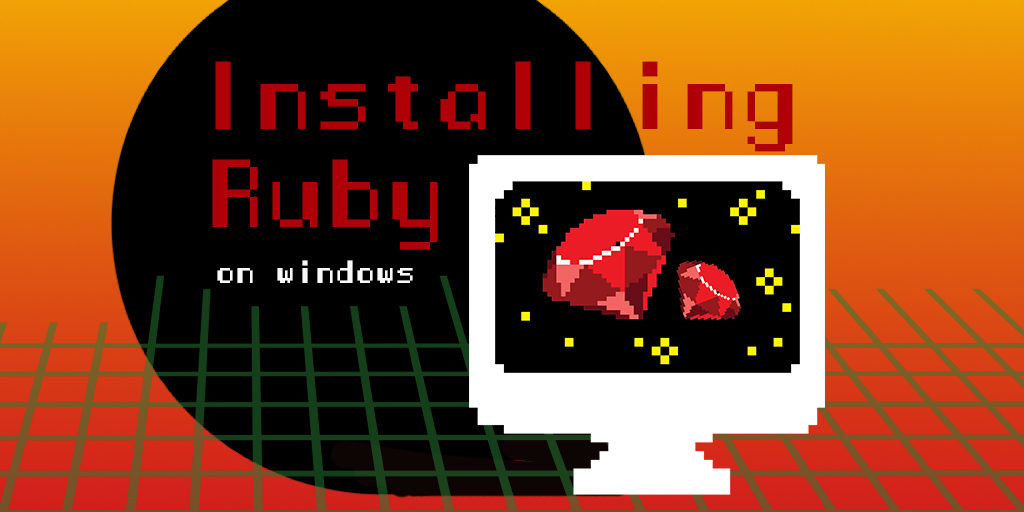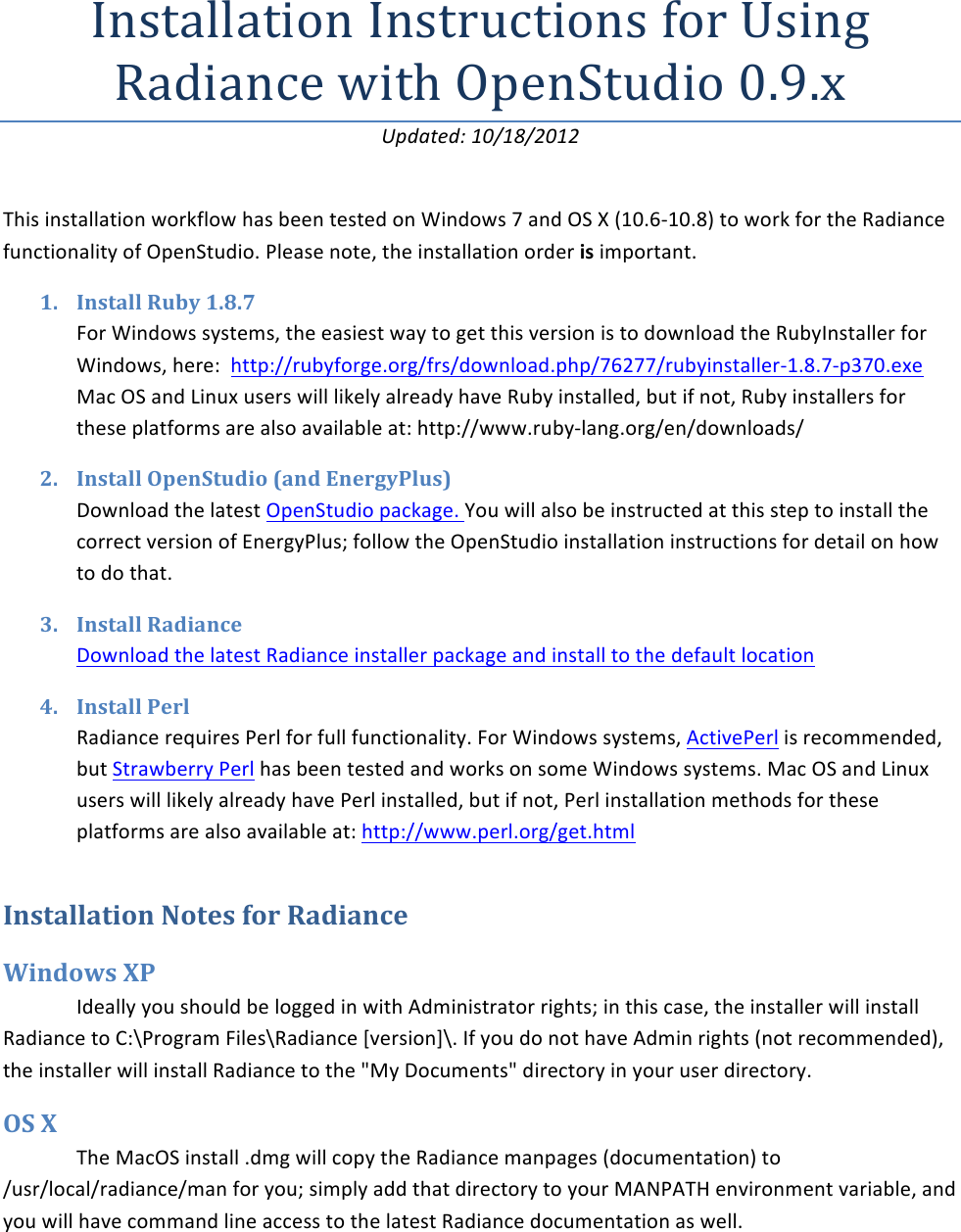Posted on September 22, 2018 by Paul
$ brew install ruby. Homebrew will install many dependencies and ultimately install and download Ruby. To check the version installed, type: $ ruby -v 2) Installation of Ruby on Windows. Follow the steps mentioned below for setting up Ruby Environment on your Windows PC, Step 1: Download the zipped installer for Ruby. We're going to use rbenv to install and manage our Ruby versions. To do this, run the following commands in your Terminal: brew install rbenv ruby-build # Add rbenv to bash so that it loads every time you open a terminal echo 'if which rbenv /dev/null; then eval '$(rbenv init -)'; fi' /.zshrc source /.zshrc # Install Ruby rbenv install 3.

In this article I will show you how to install the latest stable version of Ruby, which is 2.5.1 at the time of this writing, on macOS, Windows 10 and Ubuntu 18.04.
Start by installing the Command Line Tools for macOS. Please note, that you will need the Command Line Tools even if you’ve already installed Xcode. Open a Terminal and write:
Once the Command Line Tools are installed you will have a relatively new version of Ruby installed on your machine, 2.3 at the time of this writing. However, latest stable version of Ruby, 2.5.1, is faster and more up-to-date. Easiest way to have an up-to-date Ruby installed on macOS is to install rbenv which will let you chose between Ruby installations. The idea is to keep the system Ruby untouched and have a more modern version available.
In order to install rbenv we need to install Homebrew first:
Next, we are ready to install rbenv:
Restart the Terminal, or write:
If you want to install a particular version of Ruby you can use:
Check the Ruby version:
The above commands will install Ruby 2.5.1 and make it globally available. If you want to revert to the system Ruby version, use:
If, for some reason, you want to be able use a different Ruby version per project, you can do it. Assuming that you have also installed Ruby 2.4.0, you can enable this locally in a project folder with:
After the above, Ruby 2.4.0 will be used in my_project_path and all subfolders of this path.
For historical reasons, Ruby always had better support on Unix like operating systems (e.g. Linux, macOS, …). If you can, I would recommend to install Ruby on WSL if you want to be able to follow most Ruby books and tutorials. Please note that in order to be able to use WSL you need a Windows 10 machine. That being said, let’s proceed with installing Ruby natively on Windows.
You can get the latest stable Ruby binary for Windows from RubyInstaller. I strongly recommend to chose one of the WITH DEVKIT options especially if you plan to install third party Ruby gems. In my case, I’ve used Ruby+Devkit 2.4.4-2 (x64). At the time of this writing Ruby+Devkit 2.5.1-2 (x64) has problems with gems like sqlite3 and rails. As a general rule, you should use the version that is recommended on the RubyInstaller download page.
Use the downloaded kit to install Ruby. Make sure to check Use UTF-8 as default external encoding and keep the defaults for the remaining settings.
In the last phase of the installation, after you’ve pressed Finish, you will be asked to chose between three MSYS2 options. Press Enter to select all 3 options. After the installation is finished, simply close the cmd.exe window.
Test your installation by using Start Command Prompt with Ruby, you should get a Windows Command Prompt in which you can use the ruby command. Check the version you’ve installed with:
You can install gems and use the ruby command in the above Start Command Prompt with Ruby. As mentioned before, Ruby is extensively tested on Unix. On Windows Ruby it is more of a second class citizen, so expect problems with some gems. (Personally, I’ve tested gosu, sinatra and rails with the native Ruby 2.4.4 installation.)
If you need to use an MSYS2 command, prefix it with ridk exec, e.g.:
to see the version of pacman which is the MSYS2 package manager.
Install the Windows Subsystem for Linux, or WSL. You can check my previous article for a step by step tutorial. Once you have WSL installed, use the same steps as for a normal Ubuntu 18.04 system (see next part of this article).
Make sure you have an up-to-date system:
Next, install some prerequisites:
Easiest way to have an up-to-date Ruby installed on Ubuntu is to install rbenv which will let you chose between Ruby installations. The idea is to keep the system Ruby untouched and have a more modern version available.
In order to install rbenv use:
If you want to install a particular version of Ruby you can use:
Check the Ruby version:
The above commands will install Ruby 2.5.1 and make it globally available. If you want to revert to the system Ruby version, use:
If, for some reason, you want to be able use a different Ruby version per project, you can do it. Assuming that you have also installed Ruby 2.4.0, you can enable this locally in a project folder with:

After the above, Ruby 2.4.0 will be used in my_project_path and all subfolders of this path.
Applications
There are a good many applications that will get you up and running with Sass in a few minutes for Mac, Windows, and Linux. You can download most of the applications for free but a few of them are paid apps (and totally worth it).
Download Ruby Installer For Macos
- CodeKit (Paid) Mac
- Ghostlab (Paid) Mac Windows
- Hammer (Paid) Mac
- LiveReload (Paid, Open Source) Mac Windows
- Prepros (Paid) Mac Windows Linux
- Scout-App (Free, Open Source) Windows Linux Mac
Command Line
When you install Sass on the command line, you'll be able to run the sass executable to compile .sass and .scss files to .css files. For example:
First install Sass using one of the options below, then run sass --version to be sure it installed correctly. If it did, this will include 1.32.5. You can also run sass --help for more information about the command-line interface.
Once it's all set up, go and play. If you're brand new to Sass we've set up some resources to help you learn pretty darn quick.
Upgrade Ruby Mac
PATH. That’s all—there are no external dependencies and nothing else you need to install. If you use Node.js, you can also install Sass using npm by running
Mac Install Ruby Dev
 However, please note
However, please noteDownload Ruby Installer For Mac Os
that this will install the pure JavaScript implementation of Sass, which runs somewhat slower than the other options listed here. But it has the same interface, so it’ll be easy to swap in another implementation later if you need a bit more speed!Download Ruby Installer For Mac Catalina
If you use the Homebrew package manager for Mac OS X or Linux, you can install Dart Sass by running
Ruby Installer Download
- Current Releases:
- Dart Sass1.32.5
- LibSass3.6.4
- Ruby Sass ⚰

